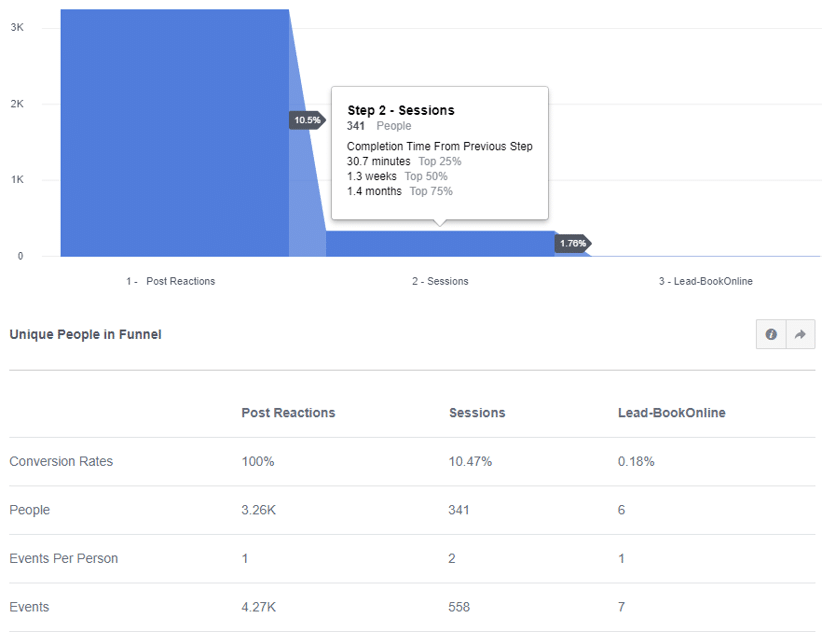Digital Media Practice Lead - Paid Social
What value do your Facebook posts have for your conversions?
Digital Media Practice Lead - Paid Social
This article is a collaboration of Yannick Proulx and Loic Karinda.
This is part two of our Facebook Analytics series . Check out the first part: Facebook Analytics and its omnichannel solution: Where to start?
BEYOND BASIC REPORTS
If you manage at least one Facebook page (for which you have administrator access) and one Facebook pixel installed on your site, you should have access to basic reports in your Facebook Analytics account. Be sure to take some time to review these reports and play around with a few segments.
Now, the killer question: do interactions like "likes", shares or comments on your Facebook posts have an impact on your conversions (or on other elements such as event pixels? )? We'll use a conversion funnel to find out. Exciting, isn't it?
GATHER YOUR DATA, THEN EXPERIMENT!
To get started, you'll first need to create an event source group , since your Facebook page and pixel data will be in two different analytics entities. The event source group is Facebook's way of linking interactions on your Facebook page to those on your website (which are tracked with the Facebook pixel) made by the same users. Simply put, this tool offers you an analysis that includes two channels and multiple devices . Wonderful!
Let's keep experimenting. To build a funnel, go to the “Activity” section and click on “Funnel”. The example below is from a Facebook page and a medical client website.

LET'S DISSECT
- The first stage of the funnel shows the number of reactions from the Facebook page.
- The second step tracks how many users visited the site after reacting to a Facebook post.
- The third and final step displays the number of converted users.
The period selected here covers the last 30 days. Note that the funnel sequence is not immediately after the Facebook action; below you can see a " Completion Time From Previous Step ". In step two below, 75% of people who reacted to the Facebook post went on to visit the website, but it took them up to 1.4 months to do so. Of course, you can take this funnel a step further by segmenting specific Facebook posts, different device types, cities, ages, gender, and more.
FIND ANSWERS
If you've ever wondered how much of a positive impact your Facebook posts have on your actual KPIs , now you know that building a funnel can answer those questions.
Did you like this second part of our Facebook Analytics series? Stay tuned! The third and final part of this series will tell you about the number of users interacting with your business by channel.
Have a question or comment about this article? Let us know!








